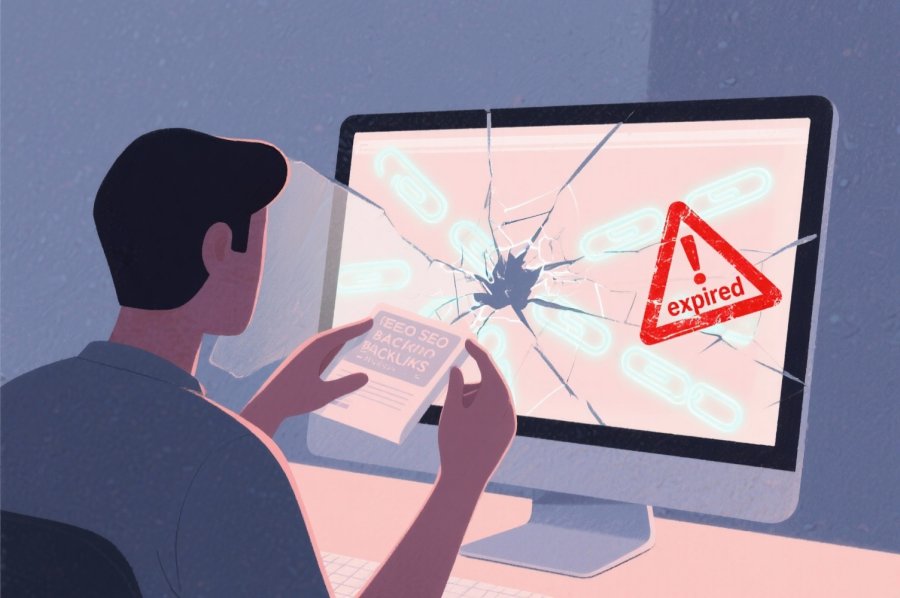Isaac Newton’s towering legacy is often celebrated for his groundbreaking laws of motion and gravity, yet it is his boundless curiosity that truly revolutionized science. How did a modest boy from Woolsthorpe ignite a relentless quest for understanding that reshaped our universe? Newton’s inquisitiveness drove him to question accepted wisdom, conduct meticulous experiments, and develop innovative tools like calculus—transforming abstract observations into precise, elegant laws. His method combined disciplined inquiry with a fearless desire to explore the unknown, inspiring a scientific approach rooted in skepticism and discovery. Today, that same insatiable curiosity fuels ongoing breakthroughs—from space exploration to quantum physics—despite modern obstacles like funding and risk aversion. Newton’s example reminds us that asking daring questions is essential for progress. As we face complex future challenges, fostering curiosity remains the key to unlocking innovations that can redefine what’s possible—just as Newton’s relentless questioning did centuries ago.
Unveiling Newton’s Impact: How Curiosity Redefined Science
Isaac Newton’s impact on science is monumental, shaping the way we understand the universe today. His groundbreaking discoveries didn’t just add to existing knowledge—they redefined the very framework of physics and mathematics. From the laws of motion to the universal law of gravitation, Newton’s work laid the foundation for modern scientific thought and technological progress. But behind these revolutionary ideas was a relentless curiosity that drove him to question everything and seek deeper answers.
Born in 1643 in Woolsthorpe, England, Newton displayed an early fascination with how things move and change. As a boy, he spent hours tinkering with mechanical devices and pondering nature’s mysteries. Those early experiments sparked a lifelong pursuit to uncover the universe’s fundamental principles. His inquisitiveness was not passive; it was a driving force that pushed him to explore beyond what was accepted at the time.
At Cambridge University, Newton’s curiosity intensified as he questioned prevailing scientific ideas. Instead of accepting traditional theories, he conducted experiments, made detailed observations, and sought explanations rooted in evidence. His notebooks reveal a restless mind constantly probing, refining, and challenging ideas about light, motion, and force. This relentless questioning became the hallmark of his approach, fueling discoveries that would alter science forever.
What set Newton apart was his ability to connect careful experimentation with rigorous mathematical reasoning. His curiosity led him to develop new tools, like calculus, to describe how quantities change over time—an insight that transformed physics. His desire to understand the underlying laws of nature drove him to formalize complex phenomena into elegant, mathematical equations, making science more precise and predictive.
Newton’s legacy extends beyond his specific theories; it embodies a new way of thinking—one driven by curiosity, skepticism, and a relentless quest for truth. His approach challenged the status quo, inspiring generations of scientists to ask bold questions and seek innovative solutions. His work reminds us that curiosity isn’t just about wonder; it’s a vital ingredient in shaping our understanding of the universe, pushing the boundaries of what’s possible.
Foundations of Genius: Newton’s Early Life and Scientific Roots
Isaac Newton’s journey into science began long before he became a household name. Born in 1643 in Woolsthorpe, England, he grew up in a modest farming family, displaying early signs of curiosity about how things worked. As a child, he spent hours tinkering with mechanical devices and asking questions about motion, light, and nature’s mysteries. These early explorations laid the groundwork for a lifelong pursuit of understanding the universe’s fundamental principles.
His fascination with the natural world deepened during his time at Cambridge University, where he encountered the scientific ideas of the 17th century. Yet, Newton’s true drive came from within. He questioned accepted notions about how objects move, how light behaves, and what forces govern nature. Instead of accepting existing theories at face value, he conducted experiments, made detailed observations, and sought explanations rooted in evidence. His notebooks from this period reveal a restless mind constantly probing, questioning, and refining his ideas.
Throughout his early career, Newton’s curiosity pushed him beyond traditional boundaries. He explored optics, studying how light and color work, and developed mathematical tools—most notably calculus—to describe motion and change. His experiments with prisms challenged the notion that white light was simple or uniform, leading to discoveries about light’s complex nature. These pursuits weren’t isolated; they demonstrated his relentless desire to connect observations with mathematical explanations, shaping his approach to understanding the universe.
Newton’s environment played a significant role in nurturing his inquisitiveness. Cambridge offered access to books, mentors, and a vibrant intellectual community, but his own drive powered his breakthroughs. His disciplined approach—testing hypotheses carefully and refining ideas through precise calculations—showed a commitment to uncovering natural truths. Whether analyzing planetary orbits or the properties of light, his work was driven by an insatiable desire to understand, explain, and unify phenomena.
Many of Newton’s earliest milestones, like formulating the laws of motion and gravity, stemmed directly from this curiosity and rigorous inquiry. Questions about why objects fall and how planets stay in orbit led him to develop theories that described the universe as a coherent, predictable system. These foundational pursuits set the stage for his later revolutionary ideas, exemplifying how innate curiosity combined with disciplined method can produce science that endures for centuries.
The Method Behind the Magic: Newton’s Curious Approach to Discovery
Isaac Newton’s scientific method was driven by an insatiable curiosity that seamlessly blended hands-on experimentation with precise mathematical reasoning. His questions about natural phenomena weren’t left on a theoretical level; they prompted him to observe carefully, test ideas repeatedly, and refine his theories through meticulous measurements. Newton believed that understanding the universe required translating observations into a language that could be analyzed—mathematics. This relentless pursuit of clarity and accuracy became the backbone of his approach, allowing him to uncover fundamental laws that others often overlooked.
His curiosity pushed him beyond surface explanations. When asking why objects fall or how planets move, Newton delved into detailed experiments and scrutinized the results. He tested hypotheses through repeated trials, constantly adjusting his methods to improve precision. This relentless questioning revealed patterns and relationships invisible to others. Curiosity and discipline worked hand in hand, enabling him to probe deeper into the underlying mechanics of nature rather than accepting superficial answers.
Newton’s desire to understand was also woven into his development of mathematical tools. He saw that phenomena like motion and light required a new form of language—calculus. His curiosity about how quantities change over time prompted him to invent this revolutionary branch of mathematics, which allowed for describing physical laws with unparalleled accuracy. The calculus was not just a tool but a direct product of his inquisitiveness, emerging from his experiments and observations to formalize complex phenomena into elegant equations.
Throughout his work, Newton’s curiosity led him to challenge and question prevailing ideas. Instead of accepting traditional notions, he broke problems into smaller parts, tested each component rigorously, and built comprehensive explanations from the ground up. His method involved asking “why” and “how” at every stage, ensuring that his conclusions were rooted in solid evidence rather than dogma. This systematic approach created a robust framework for scientific discovery.
His experiments with optics exemplify this pattern. Curious about light and color, Newton designed experiments that directly tested existing theories. Using prisms, he split and analyzed light, uncovering truths that challenged accepted wisdom of the time. This process of questioning, testing, and refining became central to his work, leading to groundbreaking insights that transformed our understanding of visual perception and light itself.
Newton’s annotated notes and correspondence reveal a mind constantly iterating—testing hypotheses, refining ideas, and pushing boundaries. His disciplined yet curious approach connected raw observations with mathematical laws, transforming complex phenomena into comprehensive theories. While some critics noted that his reliance on mathematics occasionally simplified reality, his persistent curiosity kept him questioning and exploring. His method exemplifies how curiosity and rigor can fuel scientific progress that endures through centuries.
This innovative approach to understanding natural phenomena continues to influence modern science, inspiring researchers to combine meticulous experimentation with mathematical analysis. For those interested in exploring how curiosity drives scientific breakthroughs, learning more about Newton’s methods can offer valuable insights. Discover more about the importance of curiosity in scientific discovery at Curiosity in Science.
Curiosity in Action: How Newton’s Spirit Continues to Drive Modern Science
Newton’s curiosity didn’t fade with his lifetime; in fact, it continues to shape how science advances today. Modern research still thrives on that same inquisitive spirit—scientists ask new questions, challenge old assumptions, and seek deeper understanding of the universe’s complexities. From space exploration to quantum physics, curiosity fuels breakthroughs and pushes the boundaries of what we believe is possible. Engineers depend on Newton’s laws to chart spacecraft trajectories, while astrophysicists probe distant planets and stars inspired by questions that originated with his work.
Yet, fostering this same curiosity in today’s scientific environment isn’t always straightforward. Funding limitations and risk-averse cultures can discourage bold, high-reward questions that often lead to revolutionary discoveries. The pressure to produce incremental results and publish quickly may steer researchers toward safer, less transformative projects. Despite these challenges, the drive to ask meaningful, sometimes uncomfortable questions remains vital. Encouraging hands-on experimentation, interdisciplinary collaboration, and open-minded inquiry helps keep the inquisitive spirit alive and thriving.
Technology plays a pivotal role in sustaining curiosity-driven research. Virtual labs, interactive platforms, and open data repositories democratize access to scientific exploration, allowing scientists and learners to test ideas beyond traditional boundaries. Citizen science initiatives invite everyday people to contribute questions and observations, fostering a collective curiosity that accelerates discovery. These tools and communities embody Newton’s relentless questioning on a global scale, inspiring innovation and broadening the scope of scientific inquiry.
Education also has a crucial part in nurturing curiosity. When science is taught as an ongoing adventure rather than a static collection of facts, students develop critical thinking and a genuine desire to explore. Hands-on experiments, open-ended discussions, and interdisciplinary approaches turn curiosity into a habit of questioning. By emphasizing the process of discovery over just the answers, we prepare future scientists and innovators to carry Newton’s legacy forward—questioning, exploring, and continuously expanding our understanding of the universe.
Looking ahead, the importance of curiosity in scientific progress is more significant than ever. As humanity faces complex challenges like climate change, artificial intelligence, and space colonization, the breakthroughs we need will depend on bold questions and inventive thinking. Cultivating a culture that values curiosity—not just as a trait but as a core driver of progress—ensures that innovation remains relentless. By creating environments that reward exploration and question-asking, we honor Newton’s legacy and set the stage for the discoveries that will shape our future.
Looking Forward: The Future of Progress Fueled by Curiosity and Inquiry
Curiosity has been the engine driving scientific progress for centuries, from Newton’s revolutionary theories to today’s most advanced discoveries. His relentless desire to understand the universe’s deepest secrets pushed him beyond the boundaries of conventional thinking, leading to insights that transformed physics and mathematics. The questions he posed about motion, gravity, and light ignited a scientific revolution that still shapes our understanding of the cosmos. Newton’s example demonstrates that asking the right questions isn’t just about curiosity—it’s about opening new pathways for discovery and innovation.
Looking ahead, curiosity will remain essential as we confront increasingly complex challenges. Whether addressing climate change, exploring space, or developing artificial intelligence, breakthroughs depend on bold questions that challenge assumptions and explore uncharted territory. The future of science hinges on those willing to ask uncomfortable or unconventional questions, fueling discoveries that can redefine what’s possible. Cultivating this inquisitive mindset in future generations is vital to sustain progress and ensure curiosity remains at the heart of innovation.
Creating environments that encourage questioning and exploration is crucial. Schools, research institutions, and communities must prioritize open-ended inquiry and hands-on learning, making curiosity a core value rather than an afterthought. When science is approached as an ongoing adventure rather than a static body of facts, students and scientists alike become more motivated to seek answers and challenge existing ideas. This mindset transforms curiosity from a fleeting trait into a durable driver of progress.
Advances in technology play a vital role in nurturing and expanding curiosity’s reach. Digital tools, virtual labs, and open data platforms democratize access to scientific inquiry, allowing anyone—from professional researchers to curious learners—to test ideas and explore phenomena beyond traditional boundaries. Citizen science initiatives further amplify this effect, inviting the public to participate in the quest for knowledge. These collective efforts echo Newton’s relentless questioning, accelerating discoveries and broadening the horizon of what science can achieve.
As we face the uncertainties of the future, fostering a culture that values questions over easy answers is more important than ever. Encouraging critical thinking, interdisciplinary collaboration, and creative problem-solving will help unlock new insights and breakthroughs. When curiosity is embedded into our institutions and daily lives, it becomes a powerful force that pushes humanity forward, inspiring innovative solutions to our most pressing problems.
Newton’s legacy underscores that the act of questioning is fundamental to human progress. His relentless pursuit of understanding reminds us that curiosity is not merely a trait but a catalyst for change. By nurturing inquisitiveness across generations, we ensure that the spirit of discovery endures, leading to breakthroughs that can reshape our world. The future depends on those who dare to ask “why” and “how,” continuously expanding the boundaries of knowledge and pushing the limits of what we can achieve.
In a world of rapid change and complex dilemmas, curiosity remains humanity’s most valuable tool. It fuels the desire to explore new frontiers, challenge assumptions, and uncover truths that can transform our understanding of the universe. Embracing and fostering curiosity at every level—educational, scientific, and societal—will be key to unlocking the next wave of revolutions. As Newton’s story shows, the questions we ask today lay the groundwork for the discoveries of tomorrow.






